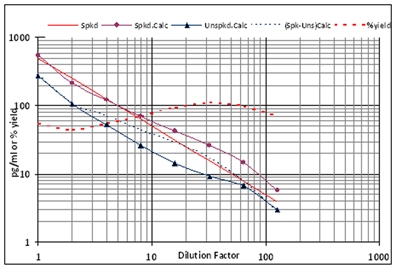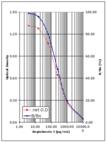-
Specific - low cross-reactivity to similar peptides
-
Non-radioactive - enzymatic assay format is safe and reliable
-
Easy-to-use - liquid color-coded reagents reduce errors
-
Ready-to-use - reagents and pre-coated plates reduce errors and save your time
The Angiotensin I EIA kit is a colorimetric, competitive immunoassay kit with results in 3.5 hours.
Please mouse over
Product Details
| Sensitivity: | 4.3 pg/ml (range 3.9-10,000 pg/ml) |
| |
| Assay Time: | 3.5 hours |
| |
| Applications: | ELISA, Colorimetric detection
|
| |
| Application Notes: | For the quantitative determination of species independent Angiotensin I in plasma and serum samples. |
| |
| Wavelength: | 450 nm |
| |
| Species reactivity: | Species independent
|
| |
| Crossreactivity: | Angiotensin I (100%), Angiotensin A (0.182%), Angiotensin II (0.083%), Angiotensin (1-12) (0.025%). Unaffected by Angiotensin (1-9), Angiotensin (1-7), Angiotensin III, Angiotensin IV, LVV-hemorphin 7, Bradykinin. |
| |
| Quantity: | 1 x 96-well plate |
| |
| Use/Stability: | All components of this kit, except the Standard (80‐2361) and Conjugate (80‐2363), should be stored at +4°C upon receipt. |
| |
| Shipping: | Blue Ice |
| |
| Short Term Storage: | -20°C |
| |
| Long Term Storage: | -20°C |
| |
| Contents: | Microtiter Plate, Conjugate, Antibody, Assay Buffer 16, Wash Buffer Concentrate, Standard, TMB Substrate, Stop Solution 2, Streptavidin-HRP |
| |
| Scientific Background: | Angiotensins are small peptides derived from angiotensinogen. Several of the known angiotensins are established endocrine effectors in the regulation of blood pressure, but they are also known to have other functions locally, in several organs and tissues (paracrine) and at the cellular level (autocrine / intracrine). Angiotensin I (DRVYIHPFHL) has no known effector function but it is an immediate precursor of Angiotensin II (DRVYIHPF). Angiotensin II binds AT1 receptors, which promote vasoconstriction, sodium retention, release of aldosterone, release of Arg-vasopressin, cell proliferation, inflammation, fibrosis, anxiety, and cardiac hypertrophy. Angiotensin A (ARVYIHPF), and Angiotensin III (RVYIHPF), also bind AT1 receptors. Angiotensin (1-7) (DRVYIHP) binds a different receptor called MAS-1 which has opposite effects (vasodilation, natriuresis, antiproliferation, NO release, PGE release, and apoptosis). Angiotensin IV (VYIHPF) binds yet another receptor called AT4 (IRAP), which promotes increase of blood flow, angiogenesis, and natriuresis, and which has also been implicated in memory formation and in the pathogenesis of Alzheimer’s disease. The peptide LVV-hemorphin-7 (LVVYPWTQRF), which is not an angiotensin, also binds the AT4 receptor. There are other angiotensin peptides that have been identified, including Ang (1-9) (DRVYIHPFH), Ang (1-12) (DRVYIHPFHLVI), Ang V(3-7) (VYIHP), as well as several other shorter peptides that have undetermined functions. |
| |
| UniProt ID: | P01019 (human) |
| |
| Regulatory Status: | RUO - Research Use Only |
| |
| Compatibility: | This product is compatible with the Absorbance 96 Plate Reader.
 |
| |
Product Literature References
Coronavirus disease 2019 is associated with low circulating plasma levels of angiotensin 1 and angiotensin 1,7: B.M. Henry, et al.; J. Med. Virol.
93, 678 (2021),
Application(s): Human plasma,
Abstract;
Full Text
Post-translational modifications of eNOS augment nitric oxide availability and facilitates hypoxia adaptation in Ladakhi women: Pooja, et al.; Nitric Oxide
78, 103 (2018),
Application(s): ELISA using human plasma,
Abstract;
Related Products



















